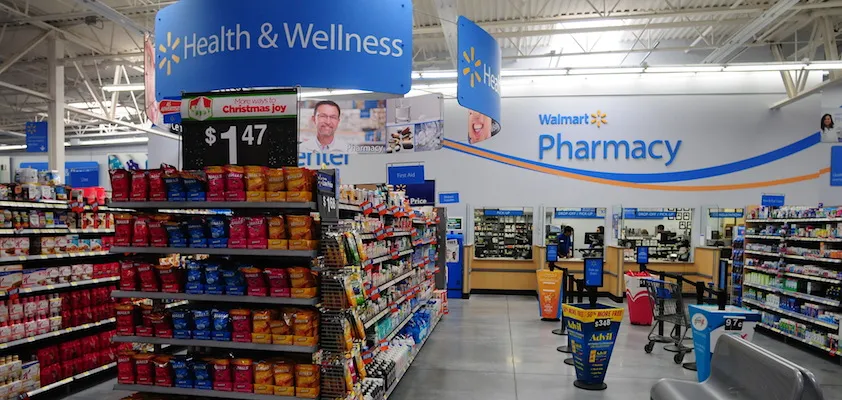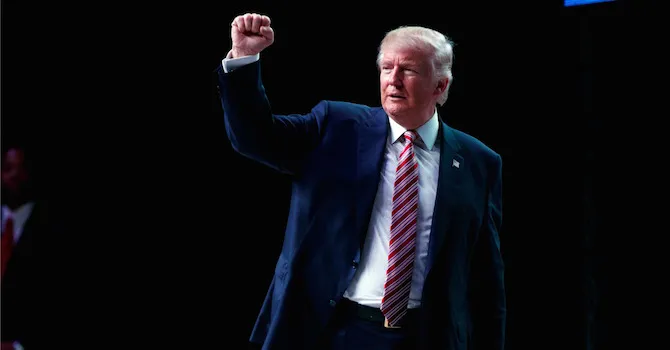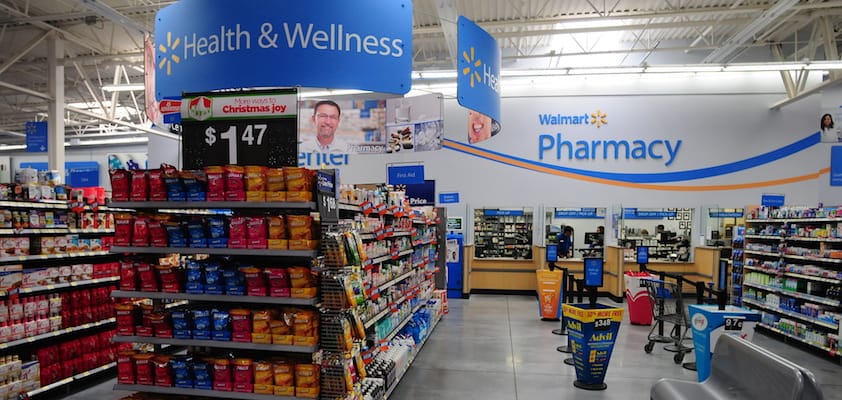
BENTONVILLE, Ark. — George Riedl is on a mission to make Walmart consumers’ first choice for pharmacy, health and wellness.
“Competing against the company for so many years, I’d always respected Walmart and really looked at it as the leader in most categories,” says Riedl, who was named president of health and wellness at the discounter last November. “From the outside looking in, I always thought that if they ever really trained their laser on health care and put the energy of Walmart behind it in a big way, it would be pretty powerful and transformational.
“We have an opportunity to own this space. Our goal is to make Walmart the front door for health care in America.”
Although the retailer is already a major force in the sector — ranking first in the sale of over-the-counter health care products and, when measured in units, eye wear, and third in prescription drugs — Riedl believes it still has a long way to go before realizing its full potential.
“Walmart offers most, if not all, of the products and services for people who want to live a healthier, happier life,” he notes. “If you’re not feeling well, our pharmacies and clinic business, where customers can benefit from consultations with our pharmacists and nurse practitioners, can help. If you want to live a healthier lifestyle, we certainly have the products and services — fresh food, fitness-connected health care products — there as well.
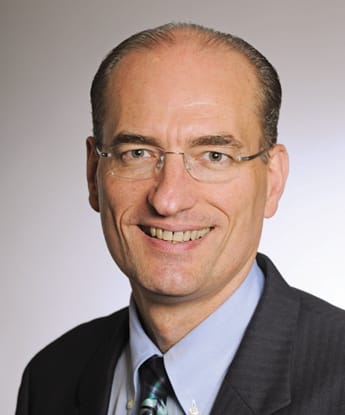
George Riedl
“We aim to be the most affordable and accessible health care provider in the U.S. We’re going to piece all these products and services together in an offering that will be extremely powerful. We’re setting ourselves up to do that as we move forward.”
Riedl’s experience makes him well equipped for the task. Trained at the University of Illinois College of Pharmacy, he spent the majority of his career at Walgreen Co., where, among other roles, he served as executive vice president of marketing and merchandising, and senior vice president of pharmacy innovation and purchasing. After 27 years at the drug chain, he was president of Advanced Marketing & Sales and George Riedl & Associates Consulting before joining Walmart.
In light of that background, it’s not surprising that Riedl’s first priority at Walmart is pharmacy. “Right now I’m focused on the core of the business, making sure that we’re set up right for success going forward.
“Walmart has an incredible, enthusiastic group of pharmacists, who are excited about practicing at the high end of their license. They see the clinical focus that we have on pharmacy and health care services, which is like none I’ve ever seen. The commitment, the teaching, the training is top notch. We’re building on a very strong foundation.”
The big challenge for Riedl and his colleagues is to help consumers understand the breadth and depth of Walmart’s health and wellness offerings, even as they work to seamlessly integrate those elements, which extend across much of the store.
“The challenge we face is creating awareness among the 140 million customers who shop our stores each week that we have pretty much everything in health and wellness that they need,” he explains. “We don’t have a traffic problem. Although we always want new customers, converting the shoppers that are in our stores today into health and wellness customers is a huge opportunity and, quite frankly, it’s right in front of us. So how do we do that? The biggest thing that Walmart is doing in that regard is the America’s Biggest Health Fair events.”
Held three times a year across the retailer’s 4,600 stores in this country, the fairs feature free hypertension, blood glucose and vision screenings, as well as information about such crucial health care programs as the Affordable Care Act and Medicare Part D. The last installment of America’s Biggest Health Fair, held in October 2015, delivered some 300,000 screenings and 50,000 immunizations in just four hours.
“These events are all about education and creating dialog with our front-end customers,” notes Riedl, who adds that America’s Biggest Health Fair will be held three times this fiscal year, in July, October and January. “It starts with the idea of helping them take better care of themselves and getting them to realize that Walmart is a health and wellness destination.”
The company is counting on Walmart’s relentless focus on value to turn shoppers into health and wellness customers. The most dramatic example of that process remains the $4 generics program that the company launched a decade ago, a move that Riedl says has saved Walmart patients $5 billion and created a ripple effect throughout the sector that benefited consumers across the board.
“Our price leadership with the $4 generics program is very important, and it fits the overall theme of the company — everyday-low prices so people can save money and live better,” he notes. “It reflects our objective of bringing transparency to everything we do. And we’re going to continue to emphasize that because, to me, health care doesn’t have a lot of transparency yet. And who’s better equipped to create that transparency for shoppers than Walmart?
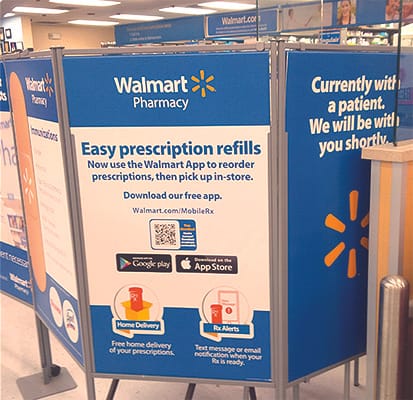
“Over the last 10 years, we’re seeing the retailization of health care. More and more patients and caregivers are becoming more and more aware of the health care services they utilize. They’re asking questions about what it costs. What’s my co-pay? What’s my deductible? Can I do it better? Less expensive? They continue to look for more value.
“It’s a perfect fit for us.”
The retailer’s determination to drive the cost of health care down is embodied in the Walmart Care Clinics. While the model is still being fine-tuned at 18 locations in Georgia, South Carolina and Texas, the clinics might ultimately have the same kind of industrywide impact as the advent of $4 generics did.
“The Care Clinic business is critical to what we’re trying to do with transforming health care access and transparency,” says Riedl. “We’re looking at the business very carefully. It’s not easy to make the model work, but there’s a big opportunity for us and for our associates. Every associate we have in the U.S. that takes part in our insurance plans can use our clinics for just $4. That’s transformational.”
The clinics — which offer acute care for such common conditions as influenza and strep throat, management of prevalent chronic conditions like diabetes and asthma, and preventive health services —promise meaningful savings to consumers. The fee for a walk-in visit starts at $59.
Riedl believes conditions in the broader health care marketplace are conducive to Walmart’s strategy: “The equation is changing with the impact of the Affordable Care Act and the exchanges. There are cost pressures on all providers in health care, so we certainly need to be smart about how we go after the opportunity in front us, but the benefit that Walmart brings is the scale that we have and scale in every part of our business. When you apply scale and focus, the end result is that the consumer’s going to win, the patient’s going to win.
“We are determined to become the front door for health care. That’s our objective. It sounds pretty bold, and it is. But I know we can do it.”
Another focal point for Riedl and his team is how to harness the power of digital technology best to advance Walmart’s health and wellness strategy.
“If we’re going four times faster in our stores and operations, we’ve got to go 10 times faster in digital,” Riedl notes. “Digital is no doubt going to be the way that you communicate, service and access your customers and patients. And that’s how they’re going to access you. So you need to be at the top of your game. We’re making a major investment in our digital capabilities, and that includes health care.”
If in some respects Walmart’s growing aspirations in pharmacy, health and wellness represent something of a departure, in fundamental ways they are deeply rooted in the retailer’s history. Riedl recalls a video he recently saw of founder Sam Walton speaking at one of the company’s legendary Saturday morning management meetings.
“Sam was talking about an experience he went through the day before at a hospital while getting an MRI,” he says. “Here’s the CEO of Walmart and first thing out of his mouth before he went into the machine is, ‘What’s that going to cost me?’
“And he’s telling the story to the executives on Saturday morning. It really shows you the forethought he had and where things were going in health care. He went through the whole story about how long the process took, and he never really got an answer to his question. Nobody knew the cost of an MRI. He was very passionate about it. It goes to show you that we’ve got to fix this — we’ve got to make it easy for customers to know what the cost of health care really is.
“It was really a wonderful thing to see. He was such a forward thinker. That’s where he wanted to take the health care business, and that’s where we’re going now. It’s really a great perspective on Sam Walton as an individual, and how price transparency and EDLP [everyday-low pricing] was so critical to our strategy.”
Riedl believes that philosophy is as relevant in the current omnichannel retail — and health and wellness — environment as it was when Walmart was started in 1962.
“What we’ve seen over the years is if you stay focused on your customers or patients, and care about your associates who serve them, and you do what’s right, nine times out of 10 you’re going to be making the right decision,” he says. “That’s certainly what Sam Walton believed, and look at the result.”

